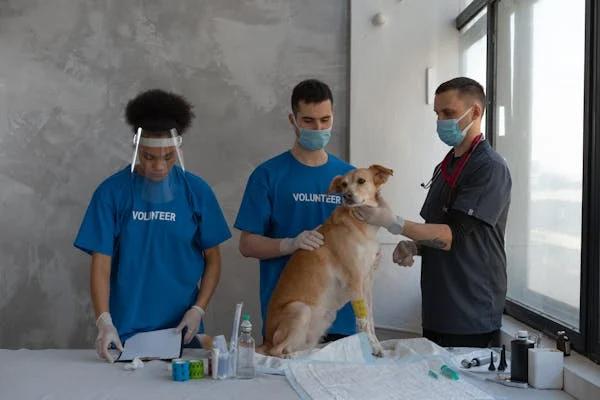Your Guide to Pet First Aid Don’t Panic, Be Prepared!
- 18 November 2024
- BuyAPet Editorial Team
- All Dogs
Your Guide to Pet First Aid: Don’t Panic, Be Prepared!
Know what to do when accidents happen—kit essentials, CPR basics, choking response, and the red flags that mean “call the vet now.”
Understanding Common Pet Emergencies
Cuts & scrapes
Clean, dress, and monitor for swelling, heat, or discharge.
Allergic reactions
Watch for sudden swelling, hives, or breathing issues; contact your vet.
Choking
Assess if air is moving; act fast if breathing stops.
Limping injuries
Rest and restrict movement; seek vet advice for worsening pain.
Pet First-Aid Kit Essentials
- Gauze, non-stick pads, cohesive bandage
- Antiseptic wipes/saline, tweezers
- Digital thermometer (and lubricant)
- Small scissors, gloves, syringe for flushing
- Pet-safe first-aid guide & emergency contacts
Check your kit every 3–6 months and replace used/expired items.
How to Perform CPR on Your Pet
- Check responsiveness & breathing. If no breathing and no heartbeat, begin CPR.
- Compressions: Dogs: hands on widest part of chest. Cats/small dogs: one-hand technique. Aim ~100–120/min, ~1 inch deep.
- Rescue breaths: After 30 compressions, give 2 gentle breaths (seal over nose/mouth). Continue cycles and seek urgent vet care.
How to Handle Choking
Mild: Encourage coughing and keep them moving. Severe: If no air, attempt abdominal thrusts (size-appropriate), check mouth for an object, and go to the vet immediately.
Knowing When to Call the Vet
- Persistent vomiting/diarrhoea, blood in stool/vomit
- Breathing difficulty, collapse, extreme lethargy
- Severe pain, sudden behaviour change, seizures
Preparing for the Unexpected
Create a family plan, keep emergency numbers visible, and know your nearest emergency clinic. Practice scenarios calmly.
FAQs
Can I give human meds to my pet?
No—some are toxic. Always consult your vet first.
How often should I refresh my kit?
Every 3–6 months and after any use.
What if I’m alone during an emergency?
Call the clinic on speaker while you begin first aid; they’ll guide you.
Conclusion: Preparation and calm action save precious minutes. Build your kit and learn the basics now.
